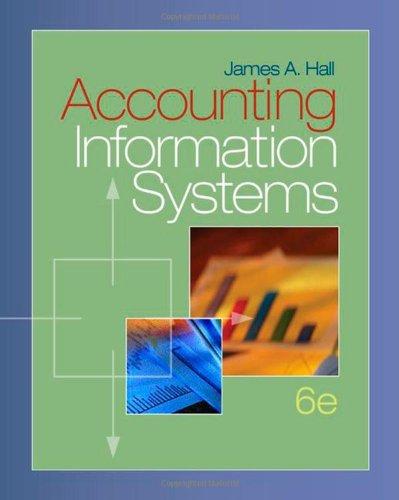A&V Safety, Inc (Prepared by Adam Johnson and Aneesh Varma, Lehigh University) A&V Safety, Inc., is a
Question:
A&V Safety, Inc
(Prepared by Adam Johnson and Aneesh Varma, Lehigh University)
A&V Safety, Inc., is a growing company specializing in the sales of safety equipment to commercial entities. It currently employs 200 full-time employees who work out of its headquarters in San Diego, California.
During the summer, the company expands to include about 10 summer, interns who are delegated smaller jobs and other errands.
A&V competes with Office Safety, Inc., and X-Safe, who leads the industry. Suppliers for A&V include Halotron Extinguishers, Kadelite, and Exit Signs, Inc., and there have been no issues requiring redress. The terms of trade A&V uses are 2–10 net 30 with FOB delivery.
This is used with all suppliers and inventory is kept at a two-week service level. This level has shown to avoid stock-outs, and the excess inventory is held at a warehouse in a suburb of San Diego.
The company has growing revenue, which has recently topped $23 million and has a return on investment of 14 percent and net margin of slightly over 20 percent. While the company has been operating efficiently, new systems problems have arisen due to the strain put on these legacy systems from recent growth.
Revenue Cycle A&V Safety, Inc., has one sales department at its headquarters in San Diego; however, their salespeople do go out to visit former and potential clients. Due to the nature of the business, sales always go through a salesperson.
The customer and the salesperson write out the customer order (CO) together. From here the CO is returned to the office, where the sales clerk completes a purchase order (PO).
Here the sales clerk performs a credit check and either authorizes or rejects the order. If the credit is authorized, the CO is entered into the company’s centralized computer system.
Once the order is entered, an electronic copy is sent to the customer, warehousing, shipping, and billing. An employee then files a hard copy of the CO in the open sales order file.
Warehousing receives the copy of the CO, prints one copy, and uses it as a stock release form to collect the order. Once the goods are picked, the warehousing clerk removes the items from the inventory sub ledger electronically.
This automatically updates the general ledger. He then files the electronic sales order in the completed order file, signs the printed stock release, and files it in the picked goods file. The picked goods are then sent to the shipping department, where the goods are reconciled with the electronic sales order.
Two copies of the sales order are printed. One copy is sent to the carrier with the goods. The second copy has billing information added to it and is entered into the computer system as a shipping slip. Once this is done, bills of lading are prepared electronically. Two copies go to billing, and the third is filed in shipping.
Upon receipt of the shipping slip and the two bills of lading, the billing clerk prepares a sales invoice from the shipping slip. This is then printed with any other charges and sent to the customer as a bill. An invoice copy is sent back to sales to close the open order file. Once the bill is sent, billing records the sale electronically in the sales journal, and an invoice copy goes to AR, where the AR sub ledger is updated. Both automatically update the general ledger.
Mail is received in the 20-person mail room, which is overseen by one manager. Here the checks and remittance advices are split after being reconciled. The remittance advices are sent to the AR department, where they are compiled into an electronic remittance list.
One copy is electronically sent to cash receipts, where the remittance list is reconciled with the checks sent from the mail room. The cashier then signs the checks and prepares deposit slips. One deposit slip is sent to an accountant in charge of cash receipts who updates the cash receipts journal electronically. This then automatically updates the general ledger. Once the cash receipts journal is updated, the checks and two copies of the deposit slip are sent via an armored carrier to the bank. One copy of the deposit slip is filed with a copy of the remittance list. A final copy of the deposit slip is sent to the AR department, where it is reconciled with the remittance list on file. Once the reconciliation is complete, the AR sub ledger is updated electronically, automatically updating the general ledger.
Required:
a. Create a data flow diagram of the current system.
b. Create a document flowchart of the existing system.
c. Analyze the internal control weaknesses in the system. Model your response according to the six categories of physical control activities specified in SAS 78.
d. Prepare a system flowchart of a redesigned computer-based system that resolves the control weaknesses you identified.
Step by Step Answer:






